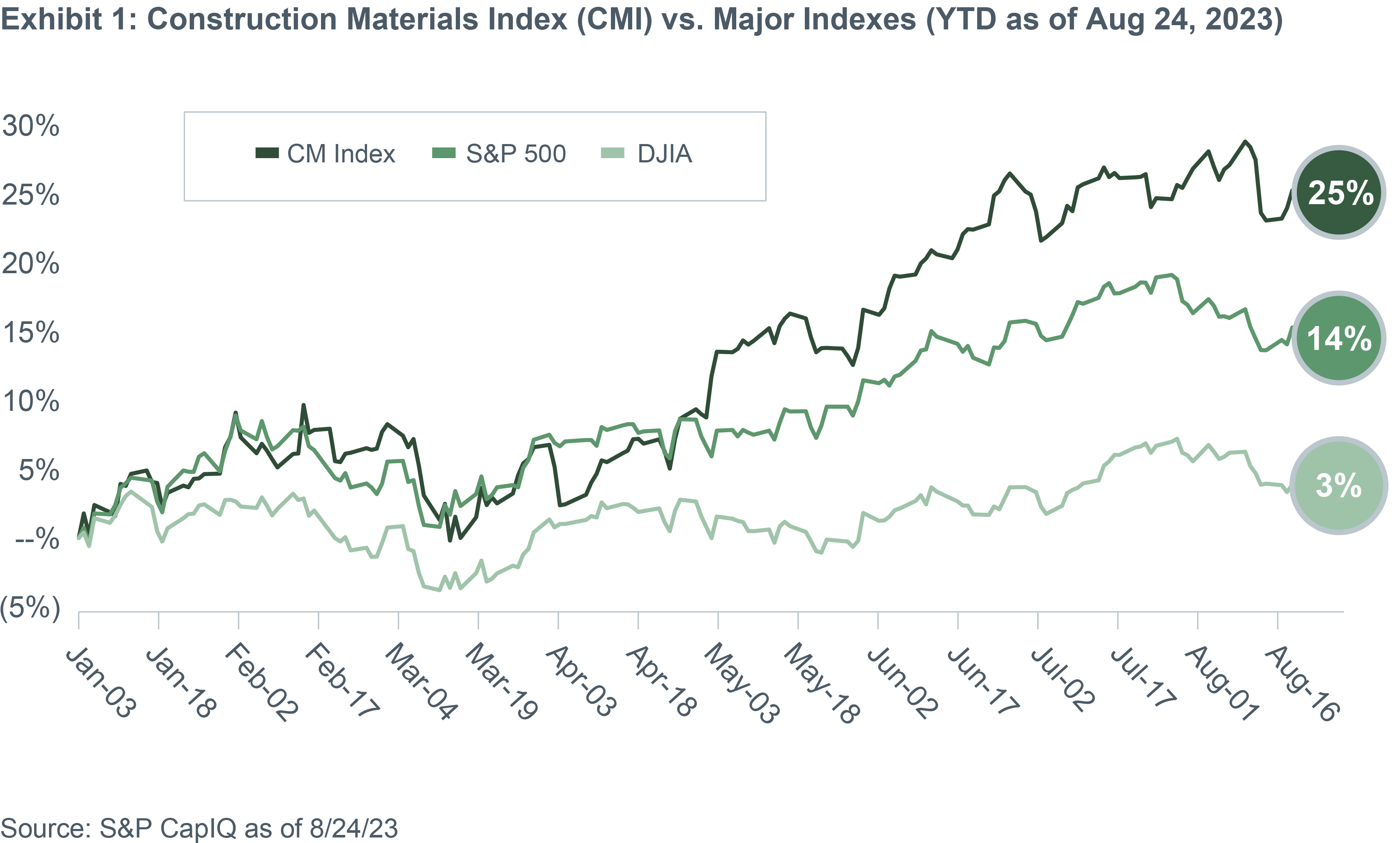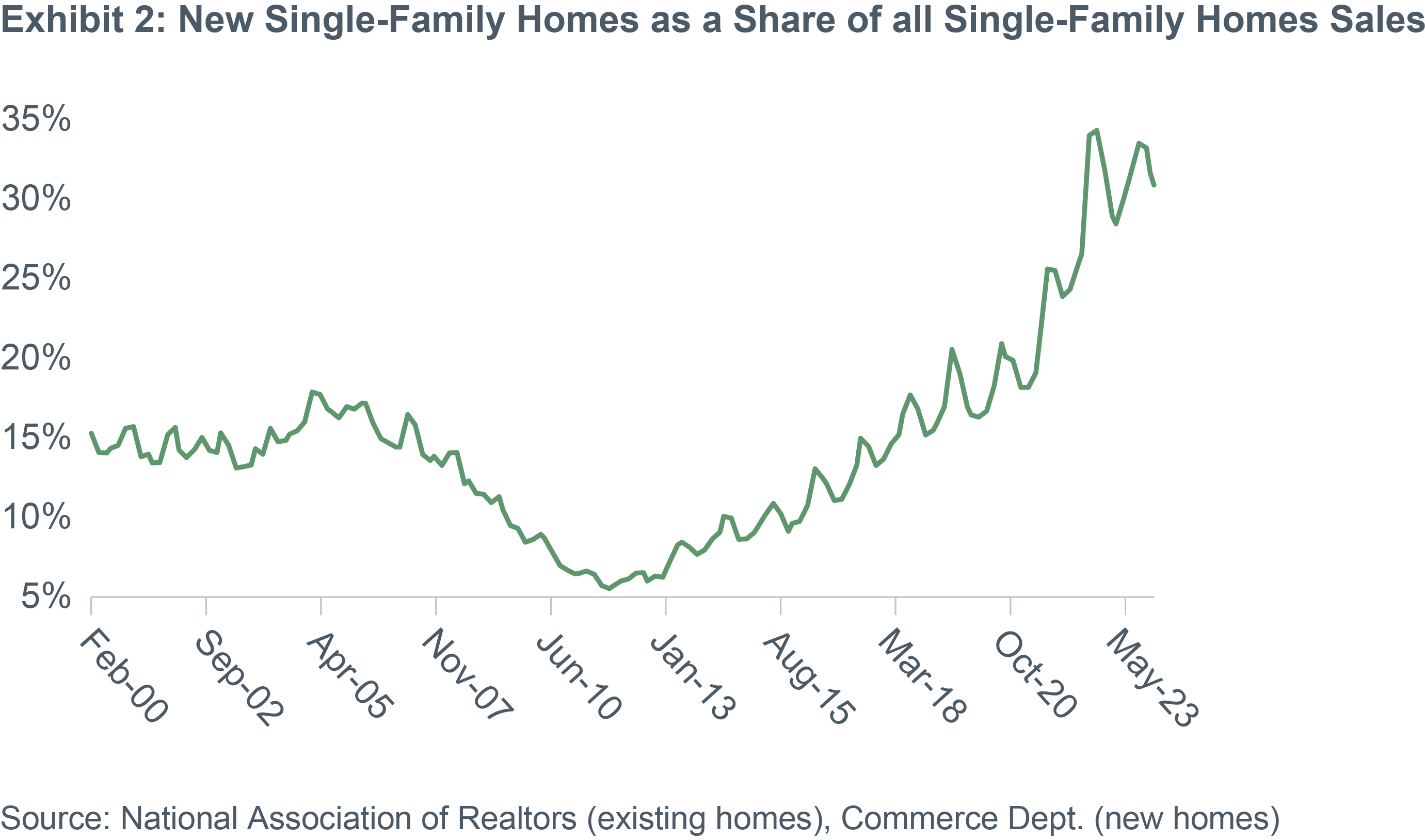Construction Materials: Clarity Amongst Confusion

By the end of August, there is normally a clear sense for how full year performance is going to look for both the general economy and the construction materials industry. However, 2023 is proving to be anything but normal. The U.S. economy continues to operate under a shroud of uncertainty, with headlines sending mixed messages every day.
Standard economic indicators are leading to more confusion than clarity. Both interest rates and mortgage rates have reached highs not seen in at least two decades, yet residential construction is seeing an increase in demand. Treasury yield curves continue to be inverted (typically an indicator that a recession is on the horizon), but economists continue to change their forecasts for a possible downturn. The Federal Reserve has continued to raise interest rates to combat inflation, albeit with a few pauses, but the labor market continues to be resilient. Shouldn’t there be more unemployment? What is the trajectory? Are we headed for a hard landing, a soft landing or even no landing?
Through this haze of confusion, the construction materials sector has proven to remain strong. Despite market abnormalities, performance for the sector continues to benefit from guaranteed funding from the Infrastructure Investment and Jobs Act (IIJA) and other legislative packages such as the CHIPS Act and the Inflation Reduction Act. Revenues and earnings are up due to effective price increases, while volumes have either flattened or slightly declined. Investors have rewarded public construction materials companies as shown in Exhibit 1.
From a mergers and acquisitions (M&A) perspective, the market uncertainty has resulted in fewer headline deals. However, momentum can quickly shift, leading to a stronger M&A market for construction materials in the second half of the year and into 2024.

Residential, Nonresidential and Nonbuilding Outlook
Residential
In theory, a rising interest rate environment should result in a decline in new residential development. Rising rates should price homebuyers out of the market and thus dampen demand for residential construction. However, current dynamics are challenging conventional wisdom.
Despite mortgage rates reaching 20-year highs in August, new construction for single-family residential is on the upswing. Existing home sales have dwindled as homeowners do not want to trade in current lower rate mortgages for higher ones. Therefore, the dearth in home supply has been exacerbated due to historic underbuilding over the past decade and current homeowners unwilling to surrender their low mortgage rates. As such, residential developers are capitalizing on the demand for new homes. As seen in Exhibit 2, sales of newly built single-family homes have significantly increased in recent years as a total share of residential transactions, making up roughly one-third of all single-family home sales.
On Holcim’s second quarter earnings call, CEO Jan Jenisch summed it up well, “[The U.S. doesn’t] have enough inventory in residential housing…and this will…be a positive trend.” Chief Financial Officer and Executive Vice President of Finance and Administration for Eagle Materials Craig Kesler concurred, “You’re starting to see some pickup in housing starts and the housing orders at the homebuilder level.”
However, despite the recent uptick in residential construction, the National Association of Homebuilders/Wells Fargo Housing Market Index (HMI), a measure of homebuilder confidence, experienced its first dip in 2023. The HMI August reading was at 50, which still indicates a favorable outlook. Regardless, aggregates and ready-mixed producers will benefit from the surprise resilience in residential construction.
FMI’s Third-Quarter Outlook Forecasts Total Residential Construction to be Down 6% for 2023

Nonresidential
The broad umbrella of nonresidential construction is having varying impacts on the construction materials sector. The once booming warehousing market appears to show signs of cooling, but cement and aggregates have other outlets.
“As warehouse construction has moderated…other heavy industrial projects led by onshore manufacturing and energy continue to drive demand…accounting for the majority of total nonresidential shipments,” said Ward Nye, CEO of Martin Marietta. Tom Hill, chairman and CEO of Vulcan Materials Company, echoed similar sentiments on his company’s second quarter earnings call. “…Private nonresidential construction… starts remained at healthy levels, with particular strength in large manufacturing and industrial projects.”
FMI’s Third-Quarter Outlook Forecasts Nonresidential Construction to be Up 14% for 2023
Nonbuilding Structures
As for road construction, IIJA funds appear to finally be coming online and should buoy asphalt and aggregates for the near term. Scott Anderson, chief financial officer of Summit Materials, confirmed on the company’s second quarter earnings call that Summit was “seeing a positive benefit from the IIJA.”
“The opportunities afforded by the IIJA continue to grow as agencies work through the process of bringing more projects to bid,” said Granite Materials CEO Kyle Larkin. The bottom line is there is more certainty in the drivers and end markets of construction materials compared to other sectors due to the guaranteed funding from the legislative packages and private investment.
FMI’s Third-Quarter Outlook Forecasts Nonbuilding Structures Construction to be Up 9% for 2023
M&A Sentiment
The M&A market for the first half of 2023 has continued its lull from the latter half of 2022. The rise in interest rates has made capital more expensive, impacting headline “mega-deals” that we have seen in recent past. However, despite the headlines, deal volume has remained steady (see Exhibit 3).
As seen in Exhibit 4, construction materials deal volume for the first half of 2023 has lagged compared to the previous two years. Bolt-on acquisitions continue to be a popular preference. Public construction materials companies have continuously emphasized over the last few quarters that their inorganic growth strategy is to pursue smaller transactions in markets where they currently operate to both increase market share and achieve synergies. “We’ll continue to do bolt-on acquisitions…to improve our market positions in the core markets that we are operating in,” said Dominik von Achten, chairman of Heidelberg Materials.
On the supply-side of M&A, private operators are capitalizing on the once-in-a-generation infrastructure package and other legislative funding. “Most of the people that we’re talking to about selling…have good backlogs, but…are really thinking more about their long-term family planning,” stated Jule Smith, CEO of Construction Partners Inc.
FMI predicts that there will be an uptick in M&A activity within the next six to 12 months, especially if the Fed reverses course and begins to lower rates. Potential sellers can position themselves for greater outcomes by vetting their financials and conducting third-party diligence on their operations. Leaving some “bloom on the rose” regarding backlogs and mitigating any risks that could occur in diligence will lead to successful transactions.


Conclusion
In summary, the market for the first half of the year was atypical. Through monetary policy, the Fed appears to be combating inflation and heading toward the appropriate 2% target, but the resiliency of the labor market may lead to elevated rates for an extended period. Recession may or may not be on the horizon.
For construction materials, there are a few conclusions that can be drawn from the first half of 2023. The combination of declining costs, particularly fuel and energy, and effective price increases has yielded positive results despite some volume slips. Public sector spending on roads and bridges and private sector investment in manufacturing facilities and residential construction has given investors more confidence in public construction materials companies. M&A has taken a backseat in the first half of the year, but things could quickly change if a recession is no longer on everyone’s minds. Buyers with capital and prepared sellers will greatly benefit if the M&A market turns for the better.
A version of this article was originally published in Pit & Quarry.



